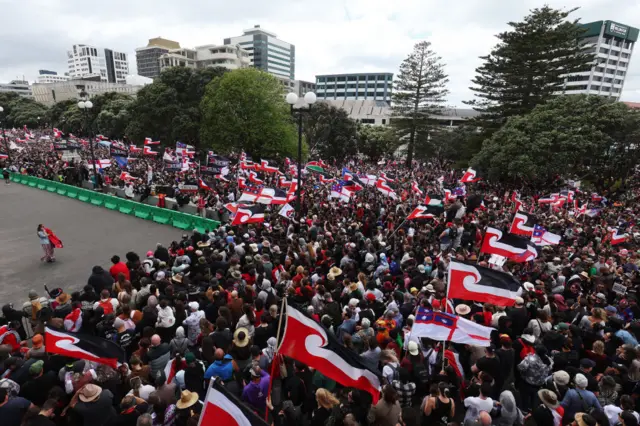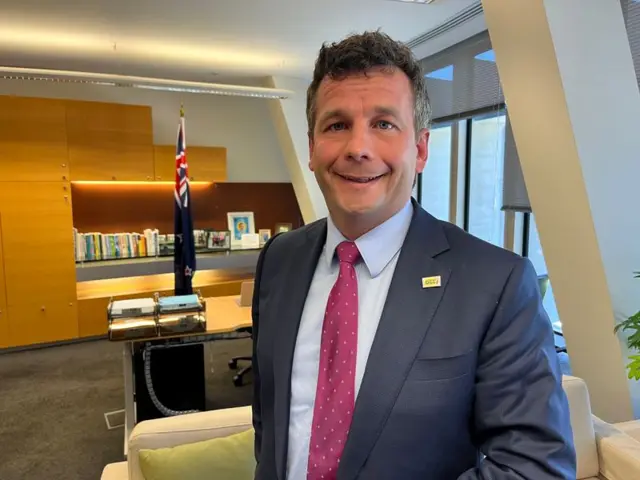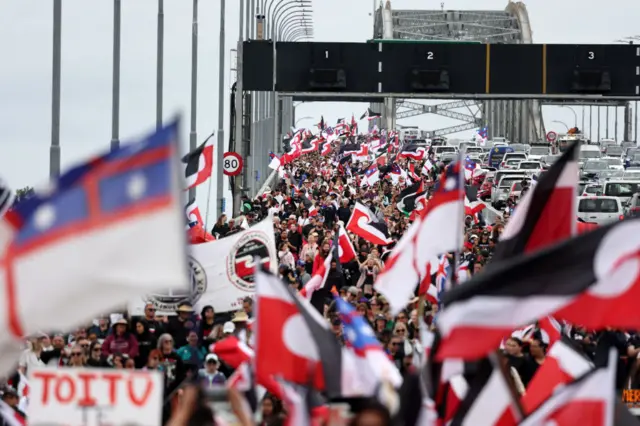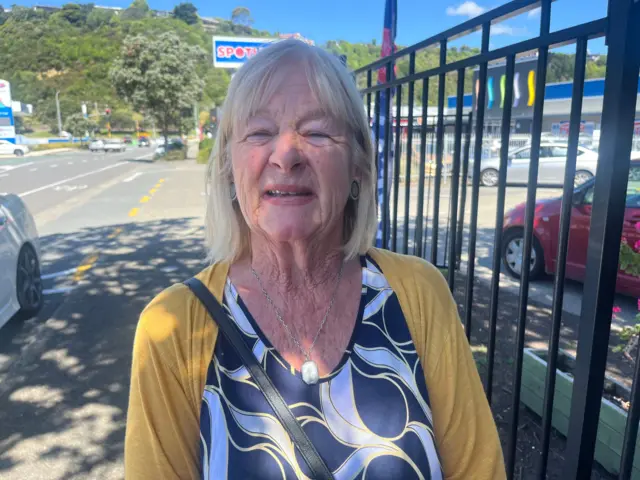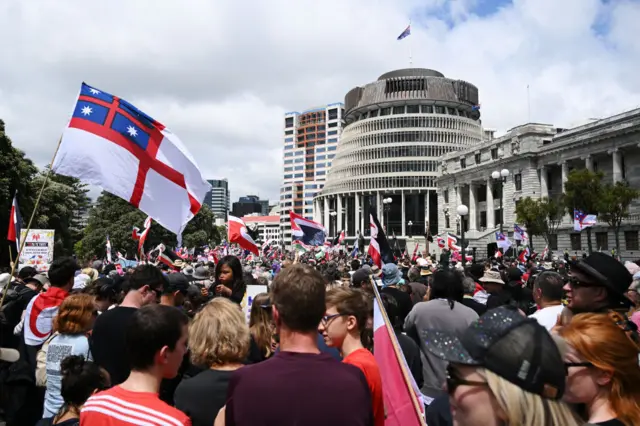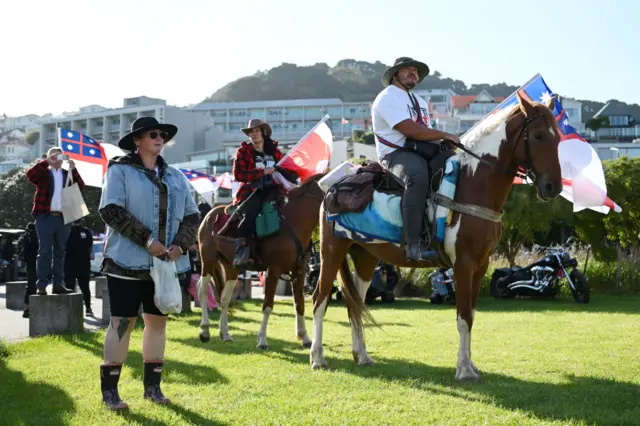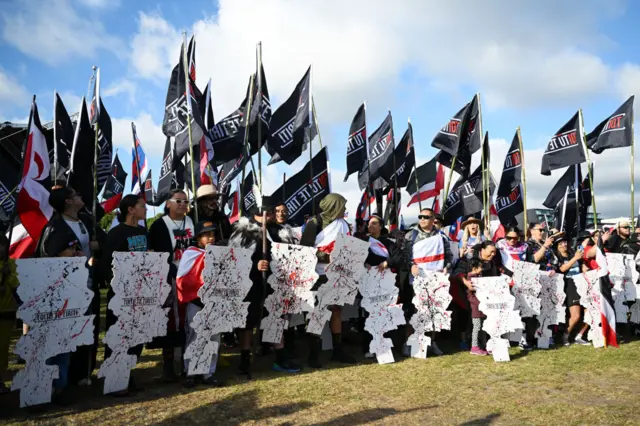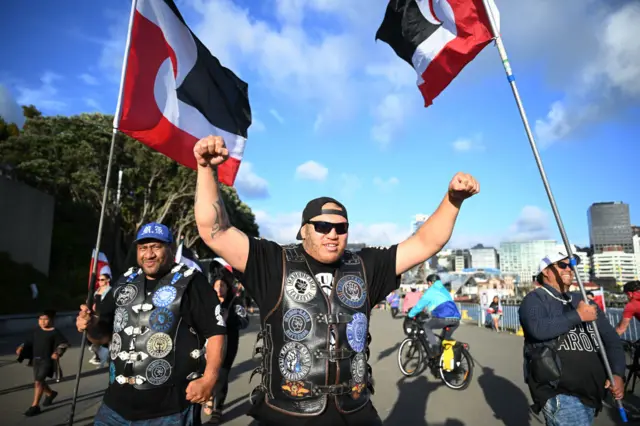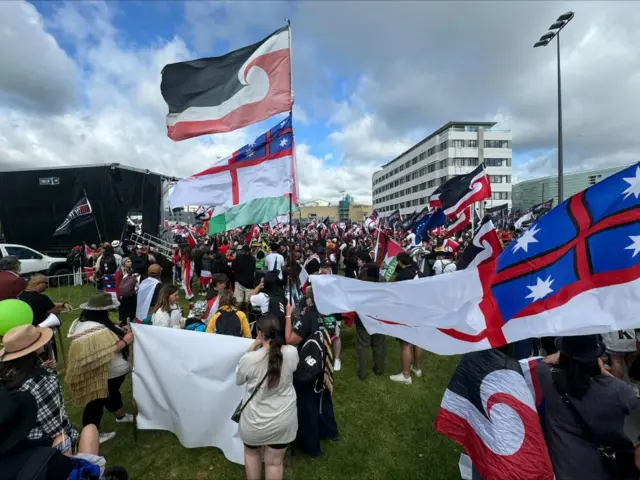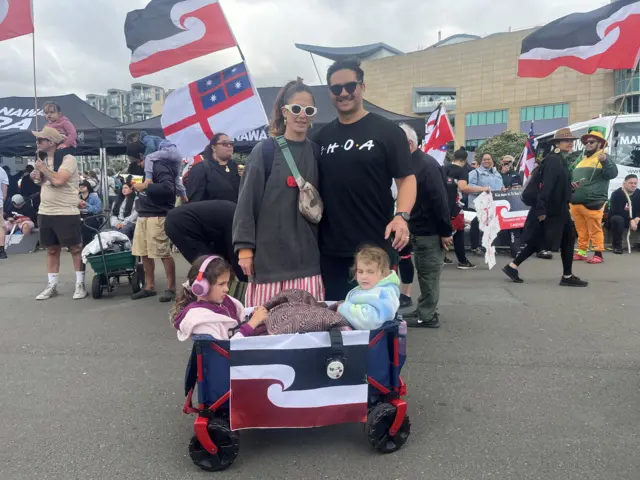We are pausing our live coveragepublished at 02:30 GMT 19 November 2024
We are pausing our live coverage of the hīkoi march.
Protesters have started leaving the grounds of New Zealand's parliament. Many will head back to Wellington's Waitangi Park for a concert, a kārakia (a prayer) and a farewell, which will mark the formal end of this nine-day march.
The hīkoi, which is a peaceful protest, was in response to the proposed Treaty Principles Bill that seeks to redefine the Treaty of Waitangi - an 1840 agreement between the British and many, but not all, Māori tribes, covering issues including land and cultural rights.
Here is a summary of what we've seen today:
- Tens of thousands of people gathered at Waitangi Park early on Tuesday in preparation for the final stretch of the march
- The Māori Queen Ngā Wai hono i te pō led the delegation to parliament where a sea of people - themselves thousands strong - was waiting on the lawns outside the building
- Police estimate that around 35,000 people were on the parliament grounds, which if confirmed would make it the largest hīkoi in New Zealand's history
- Inside parliament, Prime Minister Christopher Luxon said it was a "significant day" and reiterated that the bill would not pass a second reading
- The march has covered about 1,000km (621 miles) since it began last Monday, travelling down to Wellington from the country's northern tip
Read our piece here for more details on the histroic hīkoi.
Thank you for joining us. This live page has been brought to you by Katy Watson and Simon Atkinson in Wellington, and Jay Savage, Hannah Ritchie, Tiffanie Turnbull, Brandon Livesay, Imogen James, Ayeshea Perera and Gavin Butler in Sydney, Washington DC, London and Singapore.
